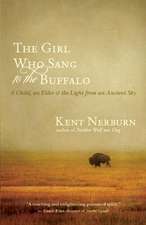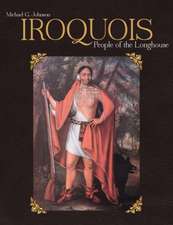Native Women's History in Eastern North America before 1900: A Guide to Research and Writing
Editat de Rebecca Kugel, Lucy Eldersveld Murphyen Limba Engleză Paperback – oct 2007
How can we learn more about Native women’s lives in North America in earlier centuries? This question is answered by this landmark anthology, an essential guide to the significance, experiences, and histories of Native women. Sixteen classic essays—plus new commentary—many by the original authors—describe a broad range of research methods and sources offering insight into the lives of Native American women. The authors explain the use of letters and diaries, memoirs and autobiographies, newspaper accounts and ethnographies, census data and legal documents. This collection offers guidelines for extracting valuable information from such diverse sources and assessing the significance of such variables as religious affiliation, changes in women’s power after colonization, connections between economics and gender, and representations (and misrepresentations) of Native women.
Indispensable to anyone interested in exploring the role of gender in Native American history or in emphasizing Native women’s experiences within the context of women’s history, this anthology helps restore the historical reality of Native women and is essential to an understanding of North American history.
Preț: 209.63 lei
Nou
Puncte Express: 314
Preț estimativ în valută:
40.11€ • 41.99$ • 33.19£
40.11€ • 41.99$ • 33.19£
Carte disponibilă
Livrare economică 15-29 martie
Preluare comenzi: 021 569.72.76
Specificații
ISBN-13: 9780803278318
ISBN-10: 0803278314
Pagini: 503
Ilustrații: 8 photos, 5 maps
Dimensiuni: 152 x 229 x 30 mm
Greutate: 0.67 kg
Editura: Nebraska Paperback
Colecția University of Nebraska Press
Locul publicării:United States
ISBN-10: 0803278314
Pagini: 503
Ilustrații: 8 photos, 5 maps
Dimensiuni: 152 x 229 x 30 mm
Greutate: 0.67 kg
Editura: Nebraska Paperback
Colecția University of Nebraska Press
Locul publicării:United States
Notă biografică
Rebecca Kugel is an associate professor of history at the University of California, Riverside. She is the author of To Be the Main Leaders of Our People: A History of Minnesota Ojibwe Politics, 1825–1898. Lucy Eldersveld Murphy is an associate professor of history at Ohio State University, Newark. She is the author of A Gathering of Rivers: Indians, Métis, and Mining in the Western Great Lakes, 1737–1832 (Nebraska 2000).
Contributors: Jennifer S. H. Brown, Carl Ekberg, Rayna Green, Clara Sue Kidwell, Rebecca Kugel, Eleanor Leacock, Nancy Oestreich Lurie, Lucy Eldersveld Murphy, Jean M. O’Brien, Theda Perdue, Michelene E. Pesantubbee, Anton J. Pregaldin, Kathryn Shanley, Nancy Shoemaker, Susan Sleeper-Smith, David D. Smits, and Helen Tanner.
Cuprins
Introduction: “Searching for Cornfields – and Sugar Groves” by Rebecca Kugel (University of California, Riverside) and Lucy Eldersveld Murphy (Ohio State University, Newark)
Section I: Theory
What Native Women Were NOT
1. Rayna Green (National Museum of American History), “The Pocahontas Perplex”
2. David D. Smits (College of New Jersey), “The ‘Squaw Drudge’: A Prime Index of Savagism,” Excerpt
What Native Women WERE
3. Clara Sue Kidwell (University of Oklahoma), “Indian Women as Cultural Mediators”
4. Jennifer S. H. Brown (University of Winnipeg, Manitoba), “Woman as Centre and Symbol in the Emergence of Métis Communities”
Equality and Feminism
5. Eleanor Leacock (Brooklyn Polytechnic Institute and City University of New York), “Women’s Status in Egalitarian Society: Implications for Social Evolution,” Excerpt
6. Kathryn Shanley (University of Montana), “Blood Ties and Blasphemy: American Indian Women and the Problem of History,” Excerpt
Section II: Method
Biography
7. Helen Tanner (Newberry Library, Chicago), “Coocoochee: Mohawk Medicine Woman”
8. Rebecca Kugel (University of California, Roverside), “Leadership within the Women’s Community: Susie Bonga Wright of the Leech Lake Ojibwe”
Central Theme: The Kinship of Religious Affiliation
9. Carl Ekberg (Illinois State University), with Anton J. Pregaldin, “Marie Rouensa-8canic8e and the Foundations of French Illinois” 0in 0pt 1.25in; TEXT-INDENT: -0.25in; mso-list: l0 level1 lfo1; tab-stops: list 1.25in"10. Susan Sleeper-Smith (Michigan State University), “Women, Kin, and Catholicism: New Perspectives on the Fur Trade”
Central Question: Did Native Women Loose Power After Colonization?
11. Theda Perdue (University of North Carolina), “Cherokee Women and the Trail of Tears”
12. Nancy Shoemaker (University of Connecticut), “The Rise or Fall of Iroquois Women”
Using Gender as a Tool of Analysis: Economics
13. Jean M. O’Brien (University of Minnesota), “Divorced from the Land: Resistance and Survival of Indian Women in Eighteenth Century New England”
14. Lucy Eldersveld Murphy (Ohio State University, Newark), “To Live Among Us: Accommodation, Gender, and Conflict in the Western Great Lakes Region, 1760-1832”
Oral History
15. Nancy Lurie, ed., Mountain Wolf Woman: Sister of Crashing Thunder, Excerpts
16. Michelene E. Pesantubbee (University of Iowa), “Beyond Domesticity: Choctaw Women Negotiating the Tension Between Choctaw Culture and Protestantism”
Section I: Theory
What Native Women Were NOT
1. Rayna Green (National Museum of American History), “The Pocahontas Perplex”
2. David D. Smits (College of New Jersey), “The ‘Squaw Drudge’: A Prime Index of Savagism,” Excerpt
What Native Women WERE
3. Clara Sue Kidwell (University of Oklahoma), “Indian Women as Cultural Mediators”
4. Jennifer S. H. Brown (University of Winnipeg, Manitoba), “Woman as Centre and Symbol in the Emergence of Métis Communities”
Equality and Feminism
5. Eleanor Leacock (Brooklyn Polytechnic Institute and City University of New York), “Women’s Status in Egalitarian Society: Implications for Social Evolution,” Excerpt
6. Kathryn Shanley (University of Montana), “Blood Ties and Blasphemy: American Indian Women and the Problem of History,” Excerpt
Section II: Method
Biography
7. Helen Tanner (Newberry Library, Chicago), “Coocoochee: Mohawk Medicine Woman”
8. Rebecca Kugel (University of California, Roverside), “Leadership within the Women’s Community: Susie Bonga Wright of the Leech Lake Ojibwe”
Central Theme: The Kinship of Religious Affiliation
9. Carl Ekberg (Illinois State University), with Anton J. Pregaldin, “Marie Rouensa-8canic8e and the Foundations of French Illinois” 0in 0pt 1.25in; TEXT-INDENT: -0.25in; mso-list: l0 level1 lfo1; tab-stops: list 1.25in"10. Susan Sleeper-Smith (Michigan State University), “Women, Kin, and Catholicism: New Perspectives on the Fur Trade”
Central Question: Did Native Women Loose Power After Colonization?
11. Theda Perdue (University of North Carolina), “Cherokee Women and the Trail of Tears”
12. Nancy Shoemaker (University of Connecticut), “The Rise or Fall of Iroquois Women”
Using Gender as a Tool of Analysis: Economics
13. Jean M. O’Brien (University of Minnesota), “Divorced from the Land: Resistance and Survival of Indian Women in Eighteenth Century New England”
14. Lucy Eldersveld Murphy (Ohio State University, Newark), “To Live Among Us: Accommodation, Gender, and Conflict in the Western Great Lakes Region, 1760-1832”
Oral History
15. Nancy Lurie, ed., Mountain Wolf Woman: Sister of Crashing Thunder, Excerpts
16. Michelene E. Pesantubbee (University of Iowa), “Beyond Domesticity: Choctaw Women Negotiating the Tension Between Choctaw Culture and Protestantism”










